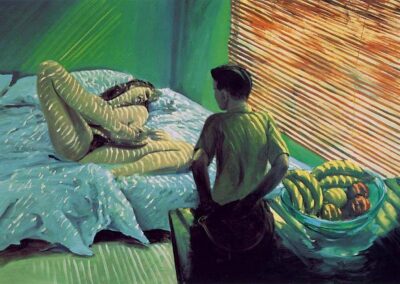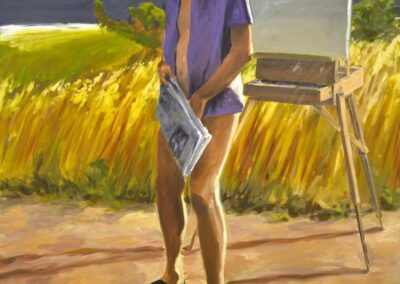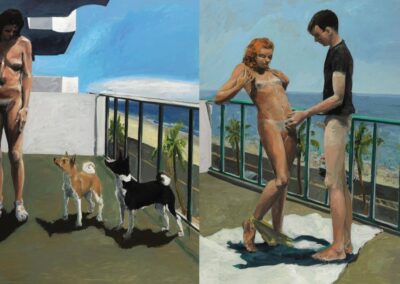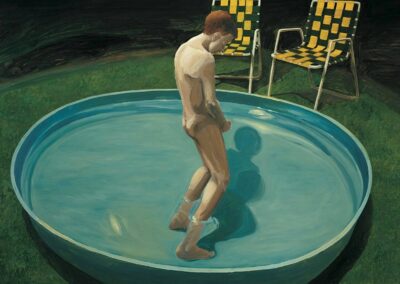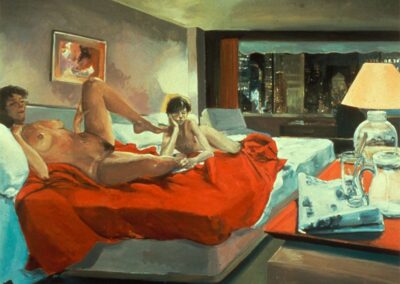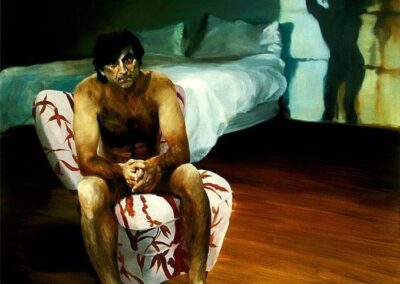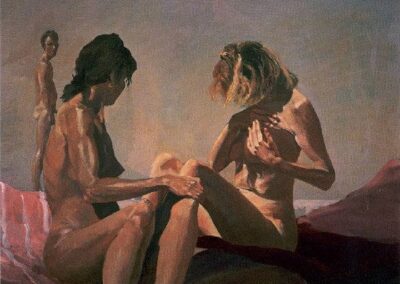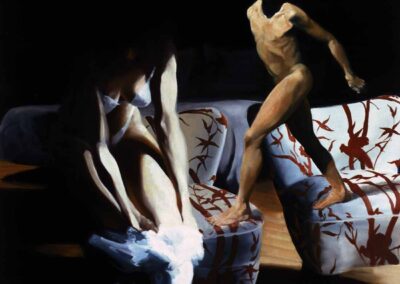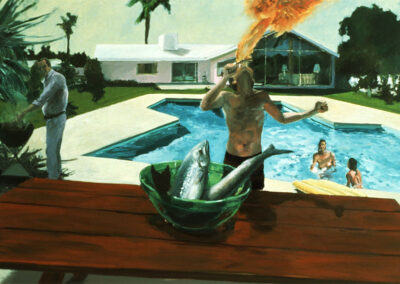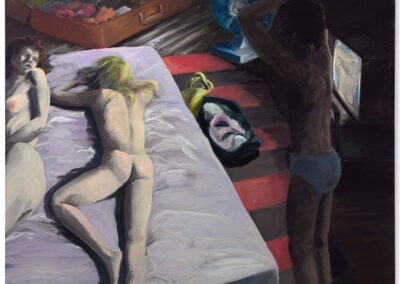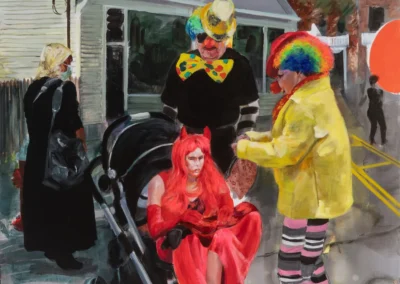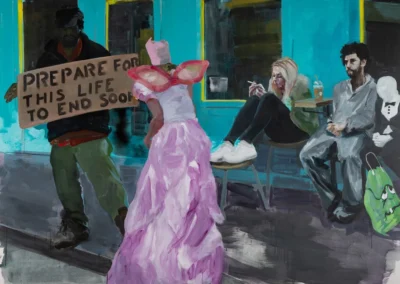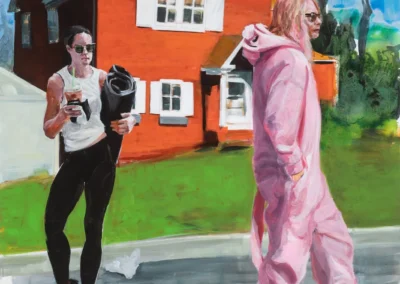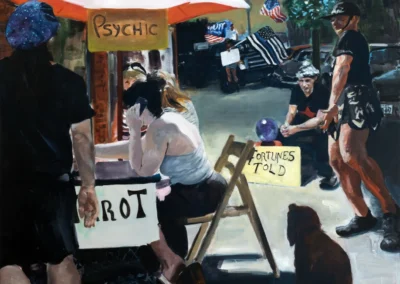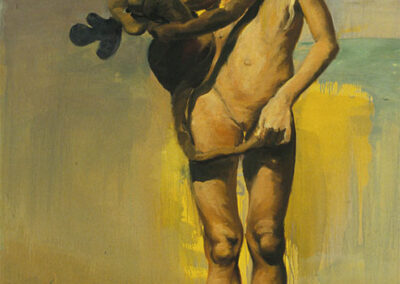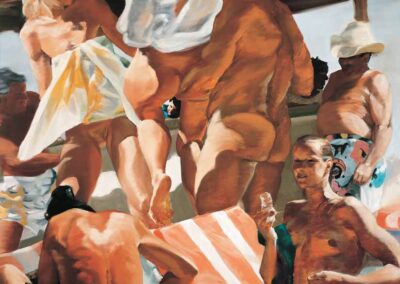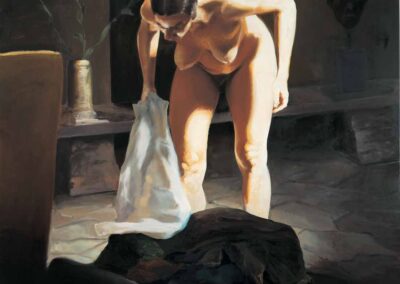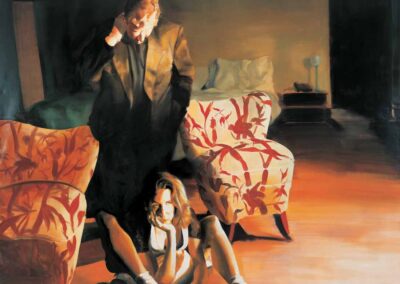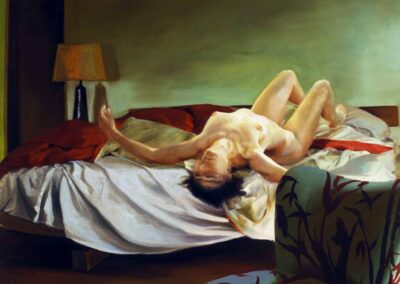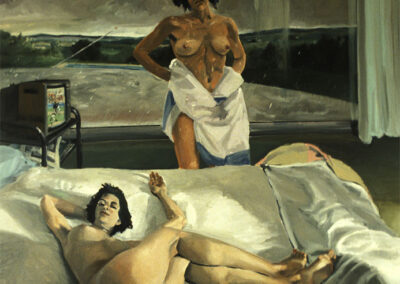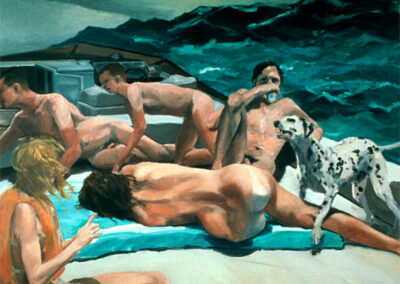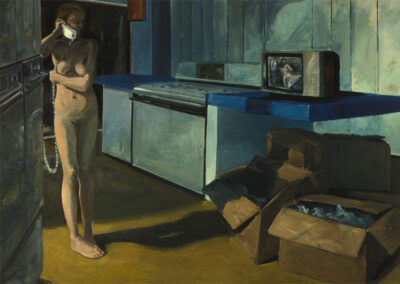The next Artist You Need To Know is Eric Fischl.
Fischl is an American artist who has worked in painting, printmaking and sculpture, but he is best known for his paintings that are depictions of American suburbia that are often unsettling and have been described as psychological portraits of that era of 1970s – 1980s suburban culture.
From The Art Story : “In the 1970s and 80s, Eric Fischl became Neo-Expressionism‘s noted bad boy with his psychologically charged depictions of American suburbia. His own dysfunctional childhood centered upon a mother who was desperately depressed and an alcoholic, which became a large influence on his paintings….he offered a refreshingly unflinching glimpse of the underbelly in human relationships and everyday life, which lurked beneath society’s manicured facade. His work invites us to reflect upon our own place within the worlds he portrays and to explore our hypocrisy, internal conflict and complacency. He asks that we never grow too comfortable. This keen critical analysis weaves from his earliest work through today in which he continues to welcome us to consider what’s hidden beneath the exterior.”
“I vowed that I would never let the unspeakable also be unshowable. I would paint what could not be said.”
Born in New York City, Fischl grew up on suburban Long Island before his family relocated to Phoenix, Arizona, in 1967. He would attend Phoenix College, then Arizona State University, and subsequently the California Institute of Arts (Valencia, CA), earning a BFA in 1972. When he moved to Chicago he worked as a guard at the Museum of Contemporary Art in that city.
For four years (1974 – 1978) Fischl taught at the Nova Scotia College of Art and Design (NSCAD) in Halifax, NS. This was during a period when NSCAD was often recruiting American and International faculty, and began to make a name for itself as both a top tier art school in Canada and beyond, as well as a hot bed for conceptual art. While in the Maritimes, Fischl married previously featured Artist You Need To Know April Gornik.
In 1978, Fischl returned to New York City.
Robert Hughes – one of the most significant art critics of the late 20th century – offered a number of insightful considerations about Fischl’s work in his book Nothing If Not Critical : Essays on Art and Artists. Below are a number of excerpts from his essay about Fischl’s artworks and their place in the larger narrative of American painting :
“Eric Fischl has become the painter laureate of American anxiety in the eighties…..Fischl has zeroed in on the discontents of the White Tribe whose territory stretches from Scarsdale to Anaheim: unreachable kids, grotesque parents, small convulsions of voyeurism and barely concealed incestuous longing.
This is the suburb as “failed Eden,” as noted by three out of three American sociologists and not a few novelists. But Fischl’s project is not to embroider clichés on it. Rather, he finds images that seem to trail a whole narrative history behind them, but obliquely so that you, as viewer, are put at the threshold of a hidden life that may, if you look closer, be yours. Fischl is a true American realist, but he works at a pitch of psychological truth (especially about adolescent sexuality) not known in American narrative art in the thirties.”
Hughes responds to a painting of Fischl’s – Girl with Doll, from 1987, which is the first image in the gallery below – in a manner that resonates when considering the artist’s aesthetic as a whole :
“The strangest image, and the simplest, is “Girl with Doll”, 1987. Wiry, squinting at the light and indefinably prole in her nakedness, she reminds you of one of Winslow Homer‘s Maine girls, deprived of innocence and brought up to date — the ones who, [the writer] Henry James complained, reminded him of a homely dish of pie. But the beach toy she holds (a vinyl Bullwinkle) is like some comic repulsive witch’s familiar; it has her by the neck, and the pairing is so vivid that for the moment you ignore the formal lapses in Fischl’s painting, such as the coarse modeling of the knees. It provokes comparisons with the pairings of monster and innocent in older art, and then slyly retracts them — Hey, lighten up, it’s just a kid on a beach! This grotesque painting exemplifies Fischl’s desire to turn the viewer into a voyeur, a reluctant and embarrassed witness. At such moments you realize that, whatever awkwardness his work harbors, he is up to something worthwhile at least on the plane of psychic narrative.”
His work is in many collections (private and corporate) and institutions that hold his artworks include The Metropolitan Museum of Art, The Whitney Museum of American Art, The Museum of Modem Art in New York City, The Museum of Contemporary Art in Los Angeles, St. Louis Art Museum, Louisiana Museum of Art in Denmark, MusÈe Beaubourg in Paris and The Paine Weber Collection.
Fischl was made a member of the American Academy of Arts and Letters in 2006. He is also a trustee and senior critic at the New York Academy of Art and is the President of the Academy of the Arts at Guild Hall of East Hampton.
Much more about Fischl’s art and ideas can be seen here and many more of his paintings can be seen here.
His own site – which you can visit here – is quite extensive, and offers very detailed resources about his exhibitions – both solo and group – as well as his writings and collaborations.

